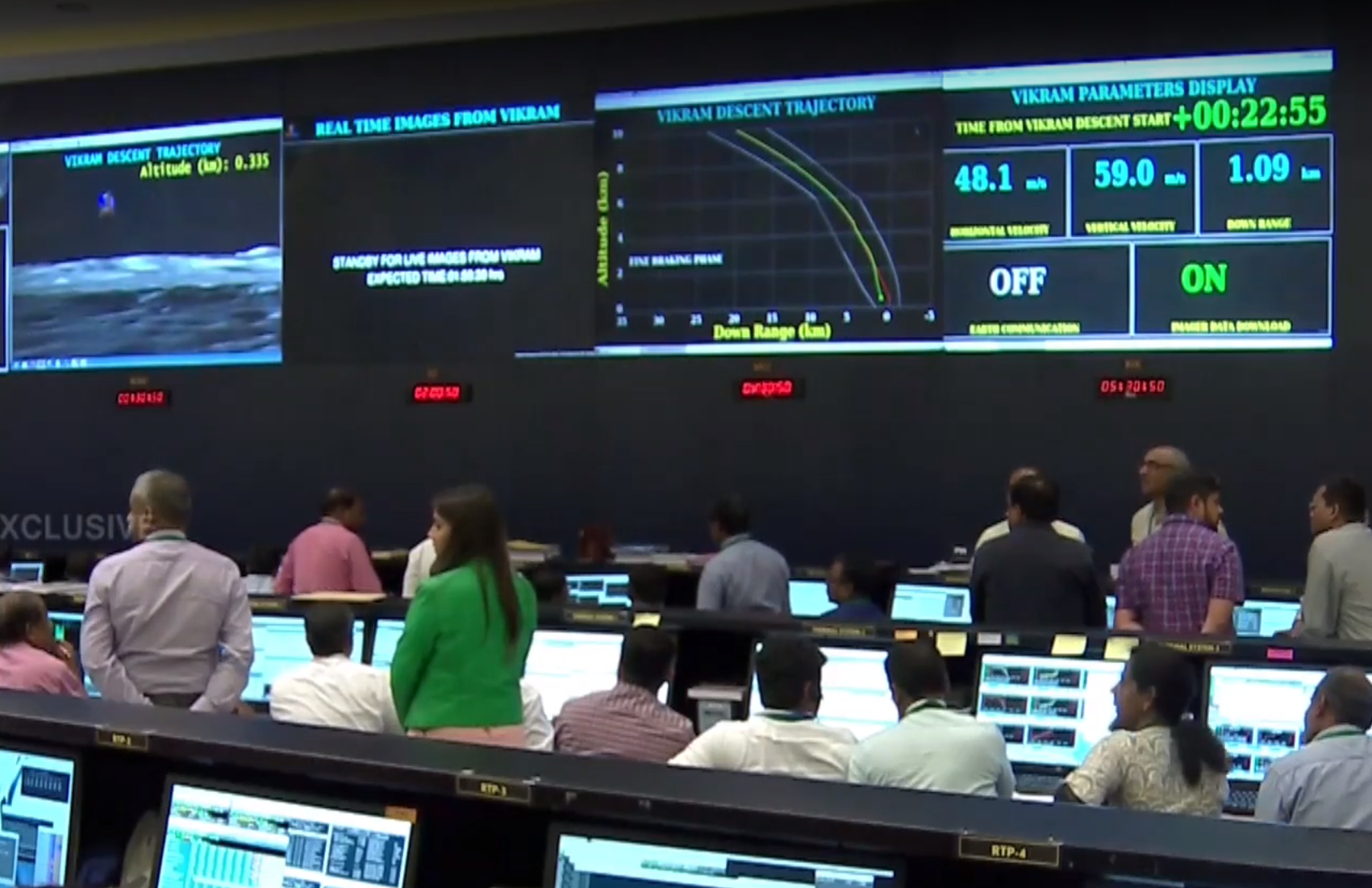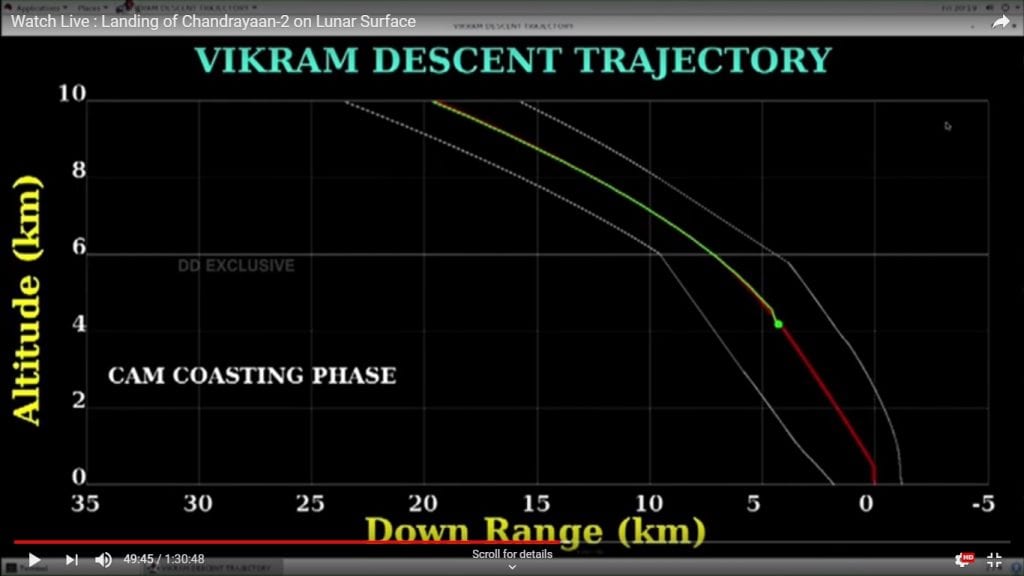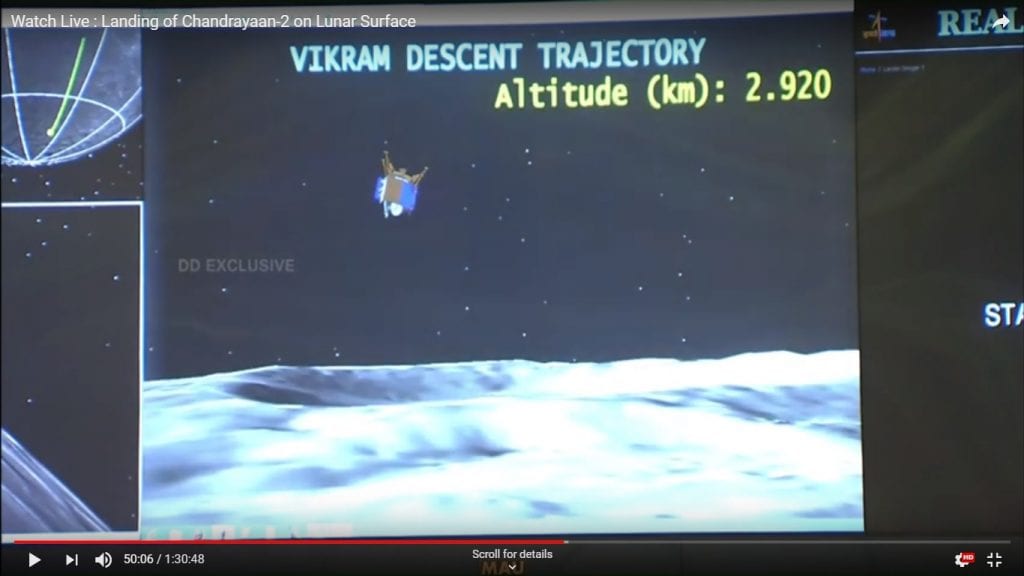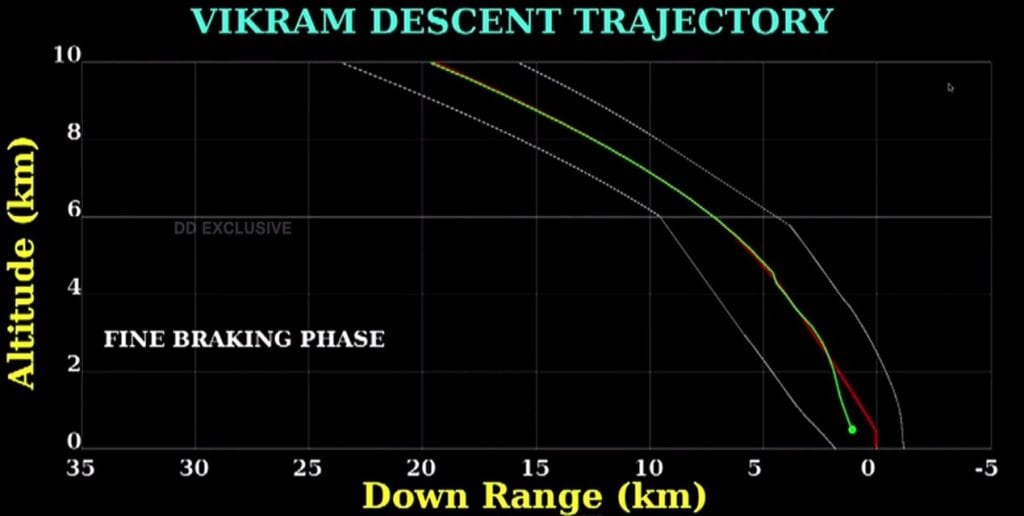
When everything seems to be lost, remember there is tomorrow
As planned, the powered descent of the lander Vikram to soft-land on the Moon commenced at 1:38 AM on September 7, 2019. Ten minutes later, the first of the four phases in the landing sequence was completed successfully.

As planned, the powered descent of the Vikram lander to soft-land on the Moon commenced at 1:38 AM on September 7, 2019. Ten minutes later, the beaming smiles and thundering claps marked the successful completion of the first of the four phases in the landing sequence. The craft had come down from a height of 30 km to an altitude of 7.4 km along the trajectory exactly matching the pre-flight prediction.
In the next 38 seconds the craft came down to 5 km above the Moon, and the fine-breaking phase was kicked in. Once again all round applauses marked the beginning of the fine-breaking stage. All was well.
Twist
The fine-breaking step was to last for 96 seconds and take the craft from 5 km height to 400 meters above the lunar surface. However, something was not right. The trajectory of the ship showed a small wiggle when the craft was coming down.

In a split second, the concoction of joy, hope, anticipation and anxiety gave way to gloom. At T-2:00 minutes, that is two minutes before the expected landing time of Vikram lander on the Moon, confusion and fluster was writ large on the faces of controllers monitoring the decent of Vikram lander at the Mission Operations Complex (MOX) at Isro Telemetry, Tracking and Command Network (ISTRAC) in Bengaluru.
Disoriented senior Isro officials initially were numbed at the unexpected turn of events. They huddled and discussed amongst themselves. The Doordarshan live telecast was pulled off.
Finally, crestfallen Dr Sivan, Chairman of Isro announced, “Vikram Lander descent was as planned, and normal performance was observed up to an altitude of 2.1 km. Subsequently, communication from Lander to the ground stations was lost. Data is being analysed.”
Also watch: Interactive graphic: Chandrayaan 2, India’s ambitious mission to moon
Devil is in the details
The control room wall display had mainly three screens. The first one gave the actual flight trajectory in comparison with the pre-flight computation. The second gave telemetry data such as the vertical and horizontal velocity, the altitude of the craft and the distance from the landing spot. Besides, the third visual display gave the current orientation of the Vikram at a frequency of one second, by taking real-time input from the Lander’s orientation.
Just around the time when the fine-braking phase commenced the trajectory of the craft showed a small wiggle. There was a temporary deviation from the pre-flight prediction for a few seconds.
The visual display of the orientation showed that the Vikram lander flipped upside down, with thrusters facing up, a few seconds after the fine-braking started. At that time the craft was 2.7 km above the lunar ground. Vikram continued to tumble and fall to an altitude of 1.3 km by when the orientation was back with the thrusters facing down. The thrusters are always supposed to face down and never up.

The divergence of the flight trajectory from the pre-flight prediction was perceptible when the craft was at an altitude of 2.1 km. When the lander Vikram was at the height of 335 meters, the last telemetry data was obtained.

It showed that the craft was still rushing with a horizontal velocity of 48.1 m/s, while as per the flight plan there must be no horizontal velocity. To add oil to the fire, the vertical speed was breakneck 59 m/s. There is hardly any chance that the craft would have survived such a massive crash. Pity that there were only six seconds left for a pre-flight predicted touchdown.
What could have gone wrong
If the animated images of the visual display of the orientation of the craft are to be believed, something caused the Lander to flip. As the thrusters faced up, it would have given an unplanned velocity addition to the Lander, making the flight dynamics haywire. Alternatively, the terrain recognition and navigation algorithm might have malfunctioned, causing the craft to disorient. Navigational and other sensors are kicked alive when the Vikram enters the fine-breaking stage. Or else it could be just a simple failure of electronics resulting in mishap. One may have to wait for investigation by the Isro to know the truth. Whatever the cause be, it caused the craft to tumble and hurled it at the Moon at high velocity.
Also watch: Final moments of mission Chandrayaan-2
Is Chandrayaan-2 mission a failure?
Indeed it is a bitter truth that Vikram and Prayaan in its belly are lost. Chandrayaan-2 had both scientific and technological components. There were scientific payloads on the Orbiter, Vikram and Pragyan. Scientific missions of the Orbiter are unhindered. Mapping the minerals, estimating the location and quantity of ice on the surface as well as below the lunar regolith and 3D terrain map of the Moon would be carried out by the Orbiter despite the loss of Vikram. With the loss of Vikram and Pragyaan, the in situ observations on the surface of the Moon is lost.
Sure, the feather in the cap of this mission, soft landing, has failed. Because of this, should we reject all other technological fetes? The ISRO built an improvised version of the GSLV Mk III to launch Chandryaan-2 into the space. The rocket not only succeeded but also performed well. Ten times the Orbiter engines were operated in orbit around Earth and Moon. Isro used a most fuel-efficient path, although taking almost 48 days, and deployed Moon’s gravity to attract the craft towards it. The Orbiter-Vikram combo was placed in a lunar orbit without a glitch.
Is the mission a failure? There are two ways of seeing it, proverbial, half-glass empty or half-glass full.


